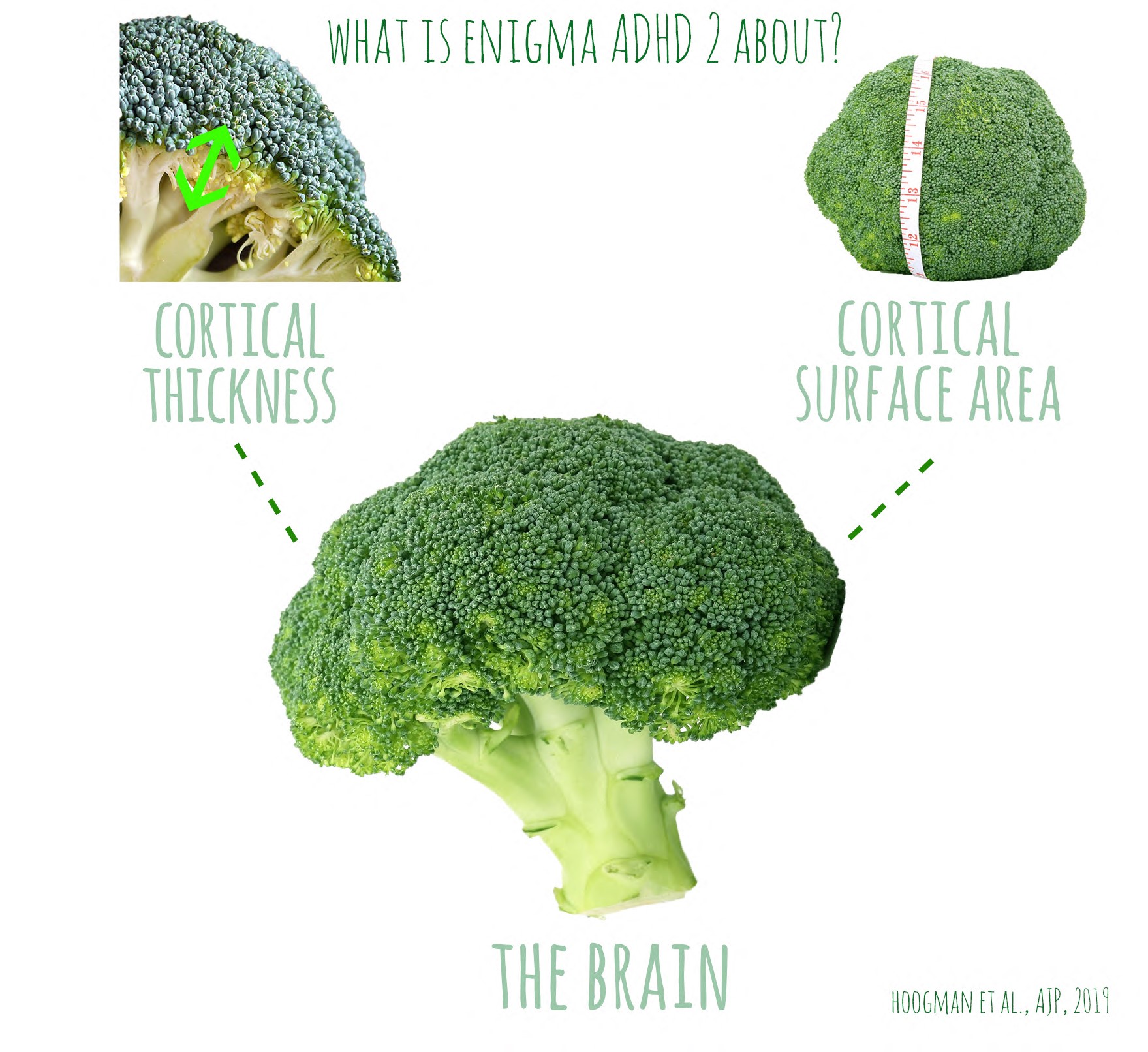It is often said that people with ADHD are more creative than others. But is that true? What does science tell us?

To find an answer to this question, I collaborated with two experts in the field of creativity, Dr. Baas and Prof. Kroesbergen, and PhD-student Marije Stolte. Together, we reviewed scientifically published research on the topic of ADHD and creativity. We summarized behavioral studies looking at creativity performance data in groups of people with and without ADHD. We also reviewed studies looking at the effect of psychostimulant medication on creative performance as people with ADHD often report that their ADHD medication suppresses their creativity1,2.
How to measure creativity
Creativity is a broad concept, but it’s often defined as “the generation of ideas or products that are original as well as useful”3 . The dual pathway to creativity model is a leading theory in the field and describes that there are many different processes involved in creativity. These can be divided into two types: cognitive flexibility and cognitive persistence4,5,6 . Cognitive flexibility is the ease with which people can switch to a different approach or consider a different perspective6 . The most prominent example of cognitive flexibility is divergent thinking. Divergent thinking is frequently assessed with the Alternative Uses Task where one has to name as many uses of a certain item as one can think of (see the below figure for an example).
The second broad type of creative thinking is cognitive persistence, defined as the degree of sustained and focused task-directed cognitive effort. A prime example of a persistent process is convergent thinking. This is often measured with the Remote Associations Task where participants have to generate a word that connects three stimulus words (e.g., black, bean, break; answer: coffee).
The Alternative Uses Task and the Remote Associations Task are both performance tasks, but in creativity research there are also measurements of creative achievements and abilities in daily life using questionnaires. These for instance ask about if you have ever won a price in a drawing competition or published a poem.

Can you think of more uses? Use your creativity!
Outcomes of our review of the published articles
Results from population-based studies found, in general, that people with a high number of ADHD symptoms, score high on divergent thinking. However, when comparing individuals with a clinical ADHD diagnosis to those without, they found no difference on divergent thinking. Studies that measured convergent thinking found no differences related to ADHD symptoms or diagnoses. But studies that assessed creative abilities or achievements in daily life, did find a positive association with ADHD. Lastly, we did not see an overall negative effect of psychostimulants on creativity in the studies that have been published so far.
In addition to reviewing the outcomes of the studies, we also looked at the quality of the studies and found that almost all studies were underpowered to detect effects. Also a lot of different creativity instruments were used and a number of important potential confounding factors, such as presence of comorbid disorders, were left out of the research. Therefore, in the future we propose to collaborate to better take care of these quality issues.
In conclusion, our review shows that certain aspects of creativity are indeed linked to ADHD. However, we have also identified gaps in the knowledge on this subject. For example, in future studies, we should try to find out what it is that causes the differences in divergent thinking between those with an ADHD diagnosis (low performance) compared with those without an ADHD diagnosis but with many ADHD symptoms (high performance).
Relevance
For years we have been studying the deficits that are linked to ADHD, but there might also be advantages, such as increased creativity. With this review we indeed show a link between creativity and ADHD, but we also identified many more questions that we want to address in future studies. With a focused research agenda we will address the identified gaps in the literature to try to improve our understanding of the link between creativity and ADHD, generating a more complete picture of ADHD. The increase of knowledge about the positive aspects of ADHD may aid in treatment and coping with ADHD, reduce stigmatization, and increase the quality of life of patients. We hope that in the future we can translate the science output to more practical implications such as educational programs in the classroom.
This blog is based on the following article:
Hoogman M, Stolte M, Baas M, Kroesbergen E. Creativity and ADHD: A review of behavioral studies, the effect of psychostimulants and neural underpinnings. Neuroscience Biobehavioral Reviews. 2020 Oct 6;119:66-85. doi: 10.1016/j.neubiorev.2020.09.029.
Martine Hoogman is funded by a personal Veni grant from NWO (Netherlands Scientific Organization) on the topic of creativity in ADHD.
References
- Brinkman, W.B., Sherman, S.N., Zmitrovich, A.R., Visscher, M.O., Crosby, L.E., Phelan, K. J., Donovan, E.F., 2012. In their own words: adolescent views on ADHD and their evolving role managing medication. Acad. Pediatr. 12 (1), 53–61. https://doi.org/ 10.1016/j.acap.2011.10.003.
- Kovshoff, H., Banaschewski, T., Buitelaar, J.K., Carucci, S., Coghill, D., Danckaerts, M., Sonuga-Barke, E.J.S., 2016. Reports of Perceived Adverse Events of Stimulant Medication on Cognition, Motivation, and Mood: Qualitative Investigation and the Generation of Items for the Medication and Cognition Rating Scale. J. Child Adolesc. Psychopharmacol. 26 (6), 537–5547. https://doi.org/10.1089/cap.2015.0218.
- Amabile, T., Conti, R., Coon, H., Lazenby, J., Herron, M., 1996. Assessing the work environment for creativity. Acad. Manag. J. 39-5, 1154–1184.
- Boot, N., Baas, M., van Gaal, S., Cools, R., De Dreu, C.K.W., 2017d. Creative cognition and dopaminergic modulation of fronto-striatal networks: integrative review and research agenda. Neurosci. Biobehav. Rev. 78, 13–23. https://doi.org/10.1016/j. neubiorev.2017.04.007.
- Mekern, V., Hommel, B., Sjoerds, Z., 2019. Computational models of creativity: a review of single-process and multi-process recent approaches to demystify creative cognition. Curr. Opin. Behav. Sci. 27, 47–54. https://doi.org/10.1016/j. cobeha.2018.09.008.
- Nijstad, B.A., De Dreu, C.K.W., Rietzschel, E.F., Baas, M., 2010. The dual pathway to creativity model: creative ideation as a function of flexibility and persistence. Eur. Rev. Soc. Psychol. 21, 34–77. https://doi.org/10.1080/10463281003765323
We want to acknowledge the noun project and Maxicons, Mikicon, Gregor Cresnar, Dannister, Arle for the pictures.













